#too many individual characters to tag
Text
List of characters and who they’re voiced by
I remembered Matt breaking character at one point and expressing that people keep crediting a different VA for one of the voices he does, so I figured I’d make something and share it to maybe help avoid any future confusion
If any of this is wrong or I forgot someone, feel free to let me know so I can correct it, and feel free to suggest additions for it, too!
Some of these are more obscure/gag/one time characters, but eh. I figured they were still worth mentioning
Davis:
Sun/all Sun variants (except Cringe Sun)
Monty/all Monty variants (both their masculine and feminine forms)
Solar/Eclipse/all Eclipse variants
Trash Can Man
Solar Flare
One of the Bloodmoon twins/“Bloody”
FC
Taurus
Forgor
Ruin
Blue and Green (Rainbow Friends)
Wally Darling
BanBan
Karen
Gordon Ramsay
Molten Freddy
Mushroom Spore Lady
Old Foxy
Henry Emily
Santa
Reed:
Old man
Neptor
Moon/all Moon variants (except Cringe Moon)
Lunar/all Lunar variants
Jack
Creator
KC
One of the Bloodmoon twins/“Harvest”
Castor
The devil from the bible
Catnap
Papyrus
Kat:
Earth/all Earth variants
Pollux
Nebula
Miku
Monty’s mom
Forgor
Dazzle
Francine
Matt:
Foxy/Cringe Foxy
Cringe Sun
Cringe Moon
Puppet
Vegeta
Leo
Frank
Stitchwraith (both Jake and Andrew)
Monty’s dad
Keith
Derek
DogDay
Kayk:
Vanny
Circus Baby/all Circus Baby variants
Elizabeth Afton
Evan Afton
Toy Chica
Roxanne/all Roxanne variants
Old Ballora
Cassie
Austin:
Gregory
Tiger Rock
Rocky
Helpi
Lazy
Cassie’s dad
Mario:
Glamrock Freddy
OG Freddy
Phantom Freddy
Shadow Freddy
Golden Freddy
Springtrap
Bon-Bon (?)
Digi:
Spring Bonnie
Glamrock Bonnie
Funtime Freddy
Glamrock Ballora (?)
Kainabunny:
New Ballora
Oddfox:
Glamrock Chica
OG Chica
Lolbit
Alexander:
Frankie
Michael Afton
#tsbs#the security breach show#tsbs voice actors#tsbs vas#the security breach show voice actors#the security breach show vas#too many individual characters to tag#rip in parachutes
77 notes
·
View notes
Text

my piece for the @yorknewauction reverse bb! @hurtinghabits wrote a fic based on this which I am very excited to buckle down and read very shortly 👀
#hunter x hunter#hxh#i am like 99% sure the 2011 anime uses melody's voice actor for the radio broadcaster and that concept was very intriguing to me haha#was also fun to focus on some characters i don't draw too often (the pt gals <3 and kortopiiiii :'D)#tooooo many characters to tag individually though so i will do the giant tag for search purposes again ^^;#gon freecss killua zoldyck melody leorio paladiknight nobunaga hazama chrollo lucifer machi komacine pakunoda kortopi shizuku murasaki
815 notes
·
View notes
Text

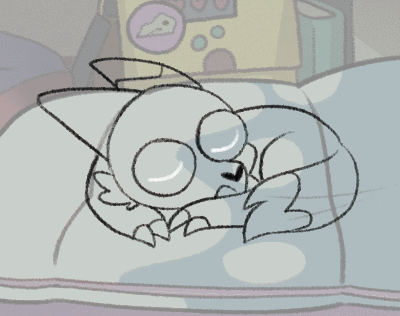

random note about king on that animation, i got really lucky with how simple his animation was and how clean my sketches were to begin with that i was able to do very minimal cleanup on what i had sketched (and add back. his horn. it's supposed to take place just after echoes of the past, Oops) and call it done that way instead of having to redraw the entire thing like i had to on his dad
first sketch > line cleanup > nearly final animation (i'd added slight eye movements last-second but otherwise that's the final)
#toh#the owl house#animation#gif#king clawthorne#the lineart slightly flickers on his one paw where i had to erase the tag and i thought it would bother me a lot more#but most people seem to use the internet on their phones - coupled with the darker palette and color of his fur#it basically completely hides it#based on feedback i don't think a lot of people realize i made that and it's not a gif from the show lmfao#BUT ITS STILL REALLY NICE THAT PEOPLE THINK IT IS!!!! I AM NOT AN ANIMATOR I AM JUST A HOBBYIST...#i animate like once a year... shits hard man.... but apparently when i do animate. its extremely good :) proud of that#even if i have an extremely unhinged way of animating#i don't have an animation program i draw everything individually frame by frame in photoshop#each character had their own psd file with the same background and every frame was its own group. twice. one for sketch one for colors#i do test takes with gifcam (there are literally 55 WIP gifs in my documents folder rn) by switching between layers and taking a 'frame'#and i compile in blender's video editor and to move things separately i save each character's frame in its own .png 'cel'#so luz was her own 'cel'. king was his own 'cel.' etc. and then i have to manually slide the lengths of the frames around#to match the right framerate. traditionally animation is animated at 24 FPS on 2's - so 12 frames a second. i go on 3s. 4 to slow down#anime-ass framerate. i'm insane apparently but its what i like to do#i dont understand real animation programs they have too many pieces but i DO understand photoshop and my funny brushes#imagine having Digital Programs and Still basically doing ye olde traditional animation method just in the computer#if im Just making a gif then i only use gifcam and switch between layers. like digital stop motion. somethings wrong with me
325 notes
·
View notes
Text
Guys! Yesterday I had a book-shaped piece of mail, and inside of it was my copy of Children and Childhoods in L.M. Montgomery: Continuing Conversations being returned, from another very dear user here! I bring this up only because some-months-ago I promised to copy out a particular article from this book, for yet another user here, who was interested! Interested because it’s on the the subject of a Fan Favourite thing... fan fiction. And better still because some of our (basically famous) mutuals here are mentioned by name! If you’ve ever wondered if the Montgomery scholarship is reading your fan fiction... the answer is yes, they are! They totally are. More than that, they also have some thoughts to share… as well as recommendations of their faves too! This article even covers the F/F and M/M fan fiction presented by fans in LMM’s universe, and I’m personally super excited to be able to begin reading these works, as soon as I can find them all. I’ve done my best to link what I could immediately find, but some of the mentioned stories were unavailable... potentially due to changes in usernames? (That said... if anyone knows of the works indicated here, that I haven’t provided a link for, please do share!)
This article, by the way, was written recently... in 2020! It’s very current, and it covers a few stories that were still being actively updated during the pandemic. The focus of this article is less so on canon (or really just the Anne/Gilbert pairing), though, and seems to prefer demonstrating the versatility of mixing relationships (Anne and Emily, for one!) and the wider more general universe-building aspects (the entanglements of future generations/Anne’s grandchildren) that fans have been expounding on for nothing less than decades.
Okay, here we go! xx
Continuing Stories: L.M. Montgomery and Fanfiction in the Digital Era by Balaka Basu
Fanfiction – the recreational (re)writing of texts – is a literary genre of rapidly growing significance. Abigail Derecho in her brief history of fanfiction identifies it as “a genre that has a long history of appealing to women and minorities, minorities, individuals on the cultural margins who used archontic writing as a means to express not only their narrative creativity, but their criticisms of social and political inequities as well.”
Insightfully defined by Francesca Coppa and Mary Ellen Curtin as “speculative fiction about character,” fanfiction can be even more precisely understood as fantasies about the diegetic positioning of characters in the context of various settings, communities, relationships both textual and paratextual, and eventually all manner of cultural mythologies.
Kristina Busse and Karen Hellekson describe the production of fanfiction as “part collaboration and part response to not only the source text, but also the cultural context within and outside the fannish community in which it is produced.”
They point out that the shift in the method of dissemination of fanfiction from newsletters and zines to internet archives means that “ever-younger fans who previously would not have had access to the fannish culture except through their parents can now enter the fan space effortlessly; financial resources have become less of a concern because access to a computer is the only prerequisite; and national boundaries and time zones have ceased to limit fannish interaction.”
The nature of fanfiction allows participants to cross-generational and socio-economic boundaries in an ongoing exchange of responses to a source text with which they share a fascination, developing new texts that in turn elicit their own responses. While the creation of fanfiction is evidence of an affective, loving, communal relationship with the source text, this genre of writing is still dismissed in many quarters as overly emotional, purely erotic, and even perverse, a type of amateur and immature engagement with popular texts that produces writing necessarily divorced from literary significance. Produced in staggeringly vast quantities by subcultures with complex vocabularies and traditions that can intimidate the casual reader, fanfiction is perceived by many to be more of a cultural practice than a literary genre, variously denigrated for its pornographic potential and its lack of originality. However, close examination reveals that fan writers are able to create a critical dialogue with the originating author in acts of communal storytelling that incorporate allusions and reference points to which other dedicated fan readers and writers may respond.
In this chapter, after examining how L.M. Montgomery and her writer heroine Emily themselves engage in practices now associated with fanfiction, I survey four forms of fanfiction that remove Montgomery’s novels from her seemingly idyllic and timeless island settings, contextualizing her characters and plots within history and other genres: the sequel set during the Second World War, the modern AU (alternate universe), the gap-filler, and the slash fic, all of which allow the young readers who grow up with her novels to engage in dialogue with the stories they love, a type of literary conversation that Montgomery herself models within her texts. Emily’s reading, which is active rather than passive, resembles twenty-first-century fans’ ownership of the texts they love, provoking creative responses. For instance, after reading works by Lord Tennyson, Elizabeth Barrett Browning, and Matthew Arnold, Emily writes, “Teddy lent me 3 books of poetry. One of them was Tennyson and I have learned The Bugle Song off by heart so I will always have it. One was Mrs. Browning. She is lovely. I would like to meet her. I suppose I will when I die but that may be a long time away. The other was just one poem called Sohrab and Rustum. After I went to bed I cried over it. Aunt Elizabeth said ‘what are you sniffling about?’ I wasn’t sniffling – I was weeping sore … I couldn’t go to sleep until I had thought out a different end for it – a happy one.”
The reactions Emily catalogues are those of the fan; they are viscerally felt in the body and attempt to dissolve the boundary between author and reader, producer and consumer. She inscribes Tennyson within her heart in order to possess the poem she loves; she creates a relationship between Barrett Browning and herself; and, most significantly, she interjects her own desired happy ending into Arnold’s tragic narrative, a corrective desire that is at the core of many works of fanfiction. Emily’s diaries and her story reflect Montgomery’s own experiences from childhood to adulthood as reader, writer, and reader-turned-writer discussed in the introduction to this volume. Depicting Emily as a voracious reader and a life-writer like herself, Montgomery places the child Emily’s voice in conversation with that of the narrator through Emily’s letters to her dead father in Emily of New Moon and through her diary entries in Emily Climbs and Emily’s Quest, creating a form of joint authorship that is referenced explicitly in “Salad Days,” the second chapter of Emily Climbs: “book is not going to be wholly, or even mainly, made up of extracts from Emily’s diary; but, by way of linking up matters unimportant enough for a chapter in themselves, and yet necessary for a proper understanding of her personality and environment, I am going to include some more of them. Besides, when one has material ready to hand, why not use it?”
The narrator’s willingness to use the “material” that is “ready to hand” reflects Montgomery’s and Emily’s practices, and also validates other writers’ use of the material Montgomery places at their disposal. As with many fans, Emily’s reading frequently makes itself felt within her writing.
Like Montgomery, Emily learns her trade through mimicry, from her first poem in blank verse inspired by James Thomson’s Seasons to her unwitting imitation of Kipling that is pointed out by her teacher, Mr Carpenter, in his review of her work. Like Sara Stanley of The Story Girl, whose compelling and fascinating stories are rarely if ever original, Emily is a fan of the oral traditions of her community, incorporating and building upon them in her own writing, transforming and recreating, for instance, the story of “The Woman Who Spanked the King” in Emily Climbs.
The retelling and versioning that Emily practises signal her immense admiration for the source texts she adapts, just as the creation of fanfiction does for Montgomery’s readership and fans. The possibilities inherent in versioning and adaptation are illustrated in Emily’s Quest. When Montgomery depicts Emily undertaking the reworking of someone else’s narrative, she is adapting an episode from her own experience while working for The Echo in Halifax, which she records in her journal. Montgomery, like Emily, was asked to create an ending for a serialized story, “A Royal Betrothal,” after compositors had misplaced the original text.
Like Emily, she claims that her “knowledge of royal love affairs [was] limited,” and that she was unaccustomed “to write with flippant levity of kings and queens.” Nevertheless, Montgomery manages to create a conclusion that passes muster, since “as yet nobody has guessed where the ‘seam’ comes in.” She is, however, curious about the original author’s reaction to her unauthorized adaptation, and while she never discovers this in real life, she does imagine it in her fiction when she introduces Mark Greaves, who is horrified by Emily’s new ending for the story but enchanted by its author. Neither Montgomery nor Emily engages in this sort of writing from a place of fandom; they have no previous attachment to “A Royal Betrothal,” and both are writing professionally. Nevertheless, the ability to solve the puzzle of the story and the weaving of their work into an already extant text are the very project of fanfiction: ludic narrative composition that recalls the way children play make-believe with the narratives they love, reworking and extending them. It is telling that Montgomery uses the metaphor of the “seam” to describe this particular craft. Jane Dawkins, writing about her fanfiction, which is inspired by Jane Austen, describes her fan novel Letters from Pemberley as “an old-fashioned patchwork quilt, where in place of the scraps of fabric reminding one of the favorite frocks or shirts whence they came, there is a line or a phrase or a sentence from one of [the original] books or letters stitched alongside the lesser scraps of my own manufacture.”
Montgomery’s final book, framed by the two world wars, is just such a patchwork sequel, albeit providing only brief glimpses of the characters that readers met as children and who have now grown older. When a version of the book was published in 1974 as The Road to Yesterday, these glimpses, lacking the interstitial materials, became even briefer, mirroring the more forced insertion of beloved characters that the two earlier collections, Chronicles of Avonlea and Further Chronicles of Avonlea, display. Only two of Anne’s grandchildren – Gilbert Ford and Walter Blythe – are obliquely referred to, in the story “A Commonplace Woman,” where an unpleasant young doctor reflects on both of them as potential rivals for the affection of a beautiful girl he himself hopes to pursue.
However, the full novel, The Blythes Are Quoted, published in 2009 and comprised of short stories about the people in Glen St Mary and over the harbour, is interspersed with poetry by both a young Walter and an adult Anne. The poems are cut with tiny slices of dialogue that suggest the continuing lives of fans’ favourite characters and how they might have developed. In “‘Dragged at Anne’s Chariot Wheels’: L.M. Montgomery and the Sequels to Anne of Green Gables,” Carole Gerson notes the mixture of feelings from pleasure to frustration that Montgomery records in her journals as she prepares to write her first sequel.
While Montgomery wrote the first installments of her various series out of inspiration, she was certainly aware of what her market desired from subsequent installments. She often regretted the necessity of marrying off her characters, but was aware that her fans demanded this conventional outcome for the characters they had come to love; these traditionally romantic endings, when not offered by Montgomery herself at the instigation of her publishers, are regularly deployed by contemporary fanfiction authors building on the source texts.
Indeed, long before the original structure of The Blythes Are Quoted was revealed to readers in Benjamin Lefebvre’s afterword, fanfiction writers were spinning off lengthy narratives that included a third generation of young Blythes, Fords, and Merediths dealing with the onslaught of the Second World War. While earlier installments in the Anne series – such as Anne of Green Gables and Anne’s House of Dreams – depict the deaths of Matthew, Anne and Gilbert’s first daughter (Joyce), and Captain Jim, Walter’s death in Rilla of Ingleside is somehow more striking. Unlike Matthew and Captain Jim, he has not yet had time to grow old; unlike Joyce, readers have had opportunities to get to know him as a child in Rainbow Valley and as he grows into young adulthood in Rilla of Ingleside. His death is unnatural and, therefore, all the more horrifying. These two aspects of Rilla of Ingleside – the evocation of history by a nostalgic fictional world that is still tied to real time and the use of high drama, tragedy, and romance – provide fanfiction authors with a model they can use to appeal to the emotions of those readers who are immersed in the next generation of Montgomery characters.
The Second World War, then, provides an entry point into the series for fanfiction authors, who can deploy real history coupled with beloved characters to create a tale that feels absolutely authentic. One example of this is a short story, “The Pen and the Sword,” written in 2007 by MarnaNightingale. Here, mimicking the style of Dorothy L. Sayers’s The Wimsey Papers (a series of Spectator articles published between 1939 and 1940, which interestingly also continue the story of First World War–era characters during the Second World War), MarnaNightingale employs epistolary excerpts and newspaper articles to tell the story of a family going through the horrors of war for a second time. Grounding her fragmented story – like The Blythes Are Quoted, a mixture of genres – in the accounts of novelist Mollie Panter-Downes (1939) and war correspondents Ernie Pyle (1940) and Ross Munro of the Canadian Press (1941), whose articles are attributed to Kenneth Ford, she offers a story that, like Rilla of Ingleside, is anchored to the historical moment, while also nostalgically focusing on the character development that comes from Gilbert Ford’s death, Rilla’s and Faith’s reactions to the war, and the lives of their children. Here war also serves as an opportunity for new experiences, particularly for women and children: Rilla takes a factory job as a machinist, liking it better than working in Carter Flagg’s store; one of Anne’s grandchildren, Susan, plans to be a doctor; and Faith, who worked as a Voluntary Aid Detachment nurse in the First World War, mentions how she can sympathize. As well, the daily tidbits that flavour the pages of Rilla of Ingleside are there: one article, attributed to Anne, includes the recipe for Susan Baker’s war bread, reminding readers of the problems of wartime rationing, even in the Americas. Real life events – like the Canadian forces trying (and failing) to make a beachhead at Dieppe – arouse the passions of the reader. Unlike Austen – who also famously wrote of three or four families in a country town, but kept the Napoleonic wars firmly in the shadows – Montgomery brings the passions and high drama of the world stage into the sleepy villages of Prince Edward Island, which inspire fanfiction spinoffs.
The long novel Cecilia of Red Apple Farm, by a fan author who posts under the pseudonym ruby gillis, also directly reworks passages and scenes from the whole range of Anne books, set in the late-nineteenth century, to The Blythes Are Quoted, set in the early years of the Second World War, to highlight the similarity between her new generation of characters and their ancestors. Cecilia is the daughter of Una Meredith and Shirley Blythe (characters often married off in fanfiction). Like MarnaNightingale, ruby gillis provides period flavouring in the styles of dresses and behaviour and in references to 1940s popular films and songs. Simultaneously, this setting offers new opportunities to her female character: Cecilia wants to be a doctor, and rather than staying in Canada, she joins up to be a nurse in England. She has a series of romances – one with Sid Gardiner (before he marries May Binnie), and one with her cousin Blythe Meredith, who is this generation’s poet – before finally ending up with Marshall Douglas (the son of Mary Vance). Just as Anne initially refuses Gilbert Blythe in favour of Roy Gardner’s resemblance to her ideal man in Anne of the Island, ruby gillis’s Cecilia is fooled by the allure of Sid and Blythe as Roy Gardner–like romantic heroes into believing that she does not truly love her fun, practical, “Gilbert-esque” friend. Published in 2004, Cecilia of Red Apple Farm further illustrates the opportunities presented by reusing and reworking a body of texts through its incorporation of Montgomery’s poem “I Wish You” as the work of Blythe Meredith. Montgomery includes this poem and attributes it to Anne in The Blythes Are Quoted, although ruby gillis could not have known this when writing. The repetition of names and circumstances might seem derivative, but for readers who have read and reread the original books so many times, the extension of the story world is prized, even if – perhaps even because of – its callbacks to the original text. Due to the tendency of fans to fixate on “the good bits” in a reread, these parts can be taken for the whole.
Austen fanfiction demonstrates this aptly. Indeed, Helen Fielding’s second Bridget Jones novel, Bridget Jones and the Edge of Reason (1999), illustrates just such a reading of Pride and Prejudice: she shows Bridget, a fan, watching the scene from the 1995 mini-series in which Darcy, dripping in a wet see-through shirt, exits the lake, and then rewinding and rewatching the scene multiple times. How many times might a similar fan reread Walter’s letter from Courcelette? This repeated reviewing of selected portions can replace the amplitude of the original novel. With this delimited focus, narrative is no longer seen as a progression, but as a single moment of pleasure, sustained as long as possible. Reading the Second World War as a repetitive sequel to the First World War further highlights this possibility.
Even Montgomery seems to do so, as demonstrated in The Blythes Are Quoted, with its new generation of characters confusingly named after the old: Walter, Jem, Rilla, Di, Anne, and Gilbert. A variation on Marah Gubar’s kinship model, this kind of continuation highlights the blurred boundaries between child and adult characters who are literally related to one another and whose adventures mimic one another.
In a third example of fanfiction set during the Second World War, Weeping May Tarry, a long novel by ElouiseBates, Meggie, the heroine, is Shirley’s daughter (and also, surprisingly, Paul Irving’s granddaughter). In this story, which like Cecilia of Red Apple Farm is an installment of a longer series, Meggie is sent off to a conservatory of music to study singing, aptly combining the traditions of the nostalgic boarding-school novel with “Girl’s Own” wartime fiction. Following the tradition of Magic for Marigold, which explicitly suggests in its second chapter that the Murrays of Blair Water and the Lesleys of Cloud of Spruce exist in the same universe, @e-louise-bates (like many other fanfiction authors, including ruby gillis) suggests that all of Montgomery’s characters exist in a single universe: Meggie partners briefly with the grandson of Sara Stanley (The Story Girl and The Golden Road) and is close friends with Jane Stuart (Jane of Lantern Hill).
Going even further, @e-louise-bates introduces the grandchildren of the What Katy Did series as friends for Meggie and includes Betsy from Dorothy Canfield Fisher’s Understood Betsy as Bruce Meredith’s wife, creating a world where all the characters of early-twentieth-century girls’ fiction seem to have truly lived, where their descendants must cope with victory gardens and dances with soldiers at the Exhibition Grounds, and where kisses are much more commonplace than they once were.
These particular continuers of Montgomery are also desirous of membership in the community of her fans, seeing their literary endeavours as productive of approval from a fellow readership. Likewise, the novels are notable for their sociality – they seem to offer the reader not only a fantasy friendship with the characters themselves but also the very real society of fellow readers of the works. Thus, these fan authors attempt to diversify their stories so that they represent contemporary beliefs regarding multiculturalism; ruby gillis, for instance, introduces into the family by way of marriage a French girl who has had to flee the Nazis due to being Jewish, a situation Montgomery and her contemporaries might have had some difficulty accepting, considering early-twentieth-century attitudes toward interreligious marriage and Montgomery’s othering of the German-Jewish peddler who sells Anne green hair dye.
The Second World War thus offers writers of Montgomery fanfiction the loom on which to weave new, more diverse stories, even as The Blythes Are Quoted, which also traces the characters’ reactions to this new war, demonstrates how these readers-turned-writers followed Montgomery’s own trajectory, not knowing that they were doing so. On the subject of fanfiction, young-adult author Patricia C. Wrede writes: “The thing that fascinates me about fanfiction, though, is the way that it models the decision tree that writers go through (whether consciously or unconsciously) to get to their final product. For those of us who do this part mostly unconsciously, it can be interesting and instructing to see the multitude of alternate paths that a story could have taken, all laid out more-or-less neatly in different authors’ fanfics [… taking a slightly different fork in the road] resulting in the plot veering in a completely new direction. Friends become enemies; enemies become friends; goals and objectives and results shift and change.” Within these pieces of fanfiction, then, fan writers are able to follow these decision trees with subsequent generations of characters as well.
Another avenue of access occurs when fan authors transpose historical narratives into the contemporary moment. Perhaps the best-known example of this modern alternate universe [AU] conversion is the television program Sherlock, which takes Arthur Conan Doyle’s Victorian detective into the twenty-first century. While new cultural contexts appear, the essence of character is meant to be retained. Just as Sherlock uses text messages and blogs to substitute for telegraphs and handwritten journals, fans of Montgomery reimagine the relationships between her characters as if they were taking place online.
For instance, “Work in Progress” (2012) by verity postulates a friendship between Montgomery’s most famous heroines, Anne and Emily. In this piece of fanfiction, Emily circumvents Aunt Elizabeth’s injunction against fiction during her time at Shrewsbury High by becoming a blogger who is restricted to the “truth.” The story’s online summary, a part of which reads “Anne rolls her eyes. ‘Is your aunt really going to know if you cheat on your nonfiction with some hot prose on the side?’” shows how the story preserves the character qualities that Montgomery laid out, complete with references to the Murray pride and Anne’s orphanhood. Mr Carpenter’s admonitions are spelled out at the beginning of the story:
“Emily Byrd Starr has a sticky note on her desktop. It reads:
ITALICS
CAPITALS
!!!!!
“just”
“really”
CTRL+F!
It is almost like having Mr Carpenter in the room with her.”
Verity creates humour through the juxtaposition of contemporary social media and allusions to Montgomery’s source text. Another story by verity detailing Rilla’s romance with Ken Ford and her friendship with Una Meredith, “Rilla of Toronto,” takes place mainly through instant messages. In this story, Rilla reflects on her life from eighteen to twenty-five, tracing a continuum from her child self to her new adulthood, underscored by verity’s translation of Montgomery’s work into contemporary millennial language.
A third type of fanfiction narrative, the gap-filler, focuses on and expands the implications of the source texts. Moira Walley-Beckett’s Netflix/CBC series Anne with an “E,” as Laura Robinson shows in chapter 12 of this volume, is somewhat fanfictional in and of itself: as Robinson points out, the show fills gaps by bringing to the fore the darker currents that have always been beneath the seemingly untroubled waters of Anne of Green Gables, including Anne’s potential post-traumatic stress disorder from the disturbing life she led before coming to Green Gables. This kind of versioning and adaptation tacitly permits fan authors to feel that their versions are just as valid as those produced by professionals. Gap-fillers frequently expand on romantic pairings and in fandom are often referred to by portmanteaux of characters’ names that perpetuate some inside joke or work as puns. “Shirbert” – a moniker for Anne and Gilbert – is the latter, and demonstrates how fans posting on sites like Archive of Our Own (Ao3), Fanfiction.net, and Wattpad (this last generally populated by younger fans) develop their own language to identify their stories within the community for which they write.
One such story, “You caught me staring, but I caught you staring back,” by Anuka, clearly inspired more by the television series than the novels, begins with an author’s note that reads, “I decided to write some fluff for these two, because I need more Shirbert moments, and season 2 is so far away. I added gifs to make it more vivid.” Here, the romance between Anne and Gilbert as depicted by Montgomery and Walley-Beckett is not sufficient for the reader-turned-writer. Anuka wants the gaps in the narrative to be more fully explored than they are on either page or screen and to be made more “vivid” by the inclusion of images that help make the story come alive.
Similarly, “Rilla Blythe’s Wedding: A Not Entirely Comprehensive Account” by Scylla also fills a gap: Rilla and Ken’s wedding day, a scene that Montgomery leaves to the reader’s imagination at the end of Rilla of Ingleside. Modelled upon other accounts of weddings within Montgomery’s fiction, the story also suggests that accounts of Walter’s death have been gravely exaggerated, as he makes a stunning appearance at his sister’s wedding. In order to align her work with Montgomery’s novel, Scylla ensures that Little Dog Monday’s awareness of Walter’s death remains, but makes it only a technicality, writing, “His heart had stopped for a full ten seconds – long enough for his Captain to feel for his empty pulse and for Dog Monday to be jolted with the fullness of his death. Little dogs, after all, can only have tender dogs’ hearts. Grief to Dog Monday was an all-consuming thing, and when Walter’s heart began to beat once more, he was deaf to its spark of joy.” After meeting with his eldest sister, Joyce, in heaven – which is, as he had always hoped, Rainbow Valley, Walter is returned to life so that he may write of peace as well as war (as he did when he was a boy), marry Una, and repair the broken hearts of readers who did not want to lose him.
While heterosexual pairings are the most prevalent in Montgomery fandom, there is room for queer imaginings as well.
This very popular genre of fanfiction, known as “slash,” is generally defined as stories that centre on samesex romances between characters, particularly between men. Montgomery slash fiction usually stars Walter Blythe.
One slash story, “but i don’t know who you are” by @freyafrida, imagines a bisexual Walter. Told in an enduringly popular sub-genre of fanfiction often referred to as Five Things Plus One (which involves a series of thematically linked but not necessarily chronological scenes), the story is summarized by @freyafrida as “Five people Walter thought he wanted, and one person he didn’t notice until it was too late.”
This last person is original to Montgomery’s text: Una, whose apparently unreturned attraction to Walter is woven through Rilla of Ingleside. The other five potential partners are all alluded to as Walter’s close friends, beginning in childhood with Alice Parker from Anne of Ingleside and Pat Brewster from The Blythes Are Quoted and then carrying on through adolescence and young adulthood with Faith Meredith, Ken Ford, and finally Paul Irving from Anne of Avonlea. While his feelings for Faith and Ken are clearly unrequited, Alice, Pat, and Paul all express their own desire for Walter. The inclusion of the famous poet and Walter’s “model” uncle, Paul Irving, in particular, particular, illustrates how traits of sensitivity and aesthetic appreciation that challenge traditional ideas about masculinity are frequently interpreted as queer by fan readers and writers.
In another slash fiction, cero_ate’s “The Moving Finger Writes, and Having Writ Moves On,” Walter discovers his homosexuality while fighting in Europe:
He wrote half truths and lies once more, when he wrote his Rilla that he could not form poems of the depths of the war. For who could write his sister of the phallic love he had found? He had found his reason in a tow-headed American boy. He meant so much more to Walter than mere friendship could explain. He wanted to write, as sweethearts write, of the tempest of joy in the darkest night. But how would they understand? How would they even try to understand he sought not the Dark Lady of Shakespeare but the youth, fair and Wilde? When he was presented with Una’s faithful heart, he spurned it. When his tow-headed darling presented his own, Walter took it, greedy for him. His grecian style love, the boy who’s [sic] eyes danced, even in the darkest of days. He would do anything to keep him safe. But he could not present him to his family, for their scorn or pity. War had broken him, but made him as well.
While male/male pairings are generally the most popular stories in fandoms, Montgomery’s novels, peopled as they are by communities of girls and women, require that readers who want to queer the text must explore what is called femslash (that is, slash fiction featuring two female characters).
Such relationships have been explored within the academic setting. For instance, Laura Robinson remarks in “Bosom Friends: Lesbian Desire and the Anne Books,” that the relationship between Anne and Diana uses “the language that readers associate with adult romantic love rather than girlhood affections,” even as it is expressed through the heterosexual paradigm of marriage.
One fanfiction author, ArcticLava21, makes it clear that such fan written stories are not speculation but instead address key issues of representation. The author’s note to ArcticLava21’s short Anne/Diana story, “Nature,” reads, “Hello everybody! Hope your [sic] having a wonderful day. Before anyone yells at me for ‘sexualizing platonic friendships’ please note that this is for all those queer kids who grew up pretending. Pretending that he ended up with him instead of her, or desperately wanted representation. Are we good? <3 Enjoy yourselves lovely people.” The intended audience of the story, “queer kids who grew up,” again establishes the transgenerational kinship between Montgomery’s child and adult fans.
All fan fiction, shared on the Internet, exist in dialogue not just with Montgomery’s fiction but with the author herself, and between the fans who read the novels as children and adolescents and the adults that these readers become.
Whether fan writers extend the narrative or fill gaps, transpose chronology or to queer the text, these pieces of fanfiction allow fans not only to insert themselves into the narrative, but also simultaneously to revivify the original novels, published a century ago. In performing interventions to the text, Montgomery’s young fans grow up to reply to the discussions that she began long ago in the pages of her journals and stories, ensuring that all three – author, reader, and text – are continually reborn into a conversation that will never end.
#any typos here are all mine 😑#apologies because i’m sure there’s so many… i’m just bleary-eyed from the screen time it took to type this guy up!#like#why didn’t i just get the kindle version#lucy maud montgomery#fan fiction#anne of green gables#emily of new moon#too many individually referenced characters to tag here really!
51 notes
·
View notes
Text

was rewatching solve it squad returns because i just remembered they exist
#justtrashdoodles#tin can bros#solve it squad#solve it squad returns#im not gonna tag individual characters solely bc ive seen too many version#of scrags name. nope not today /lh#can you tell my fave.
61 notes
·
View notes
Text

To celebrate the return of the Queen, I finally finished a piece that I've had sitting on my hard drive for five straight years, originally sketched before I even finished writing Learnin' the Blues. Hail to the queen, baby!
#art#Joan#Fallout New Vegas#fnv#Fallout#too many characters to bother tagging individually you know who they are#Learnin' the Blues
85 notes
·
View notes
Text
pokespe doodle dump as I try to get used to character designs wee
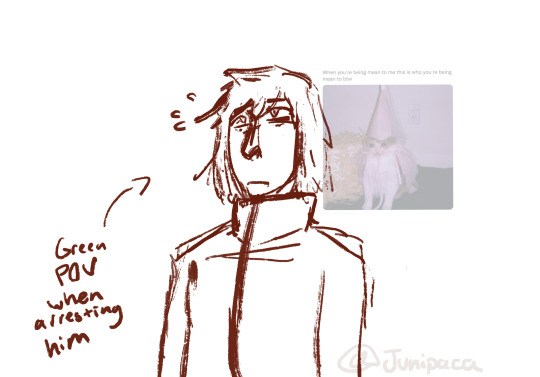
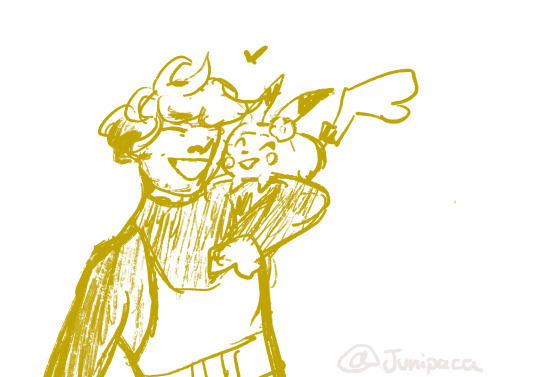


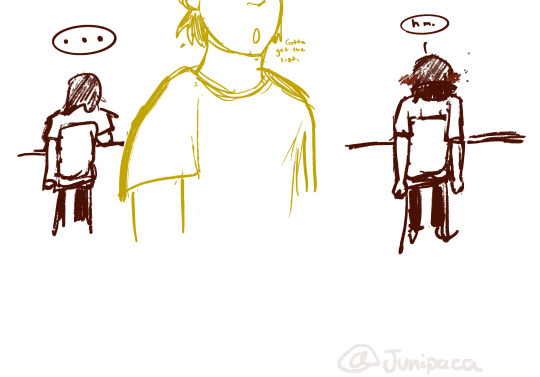
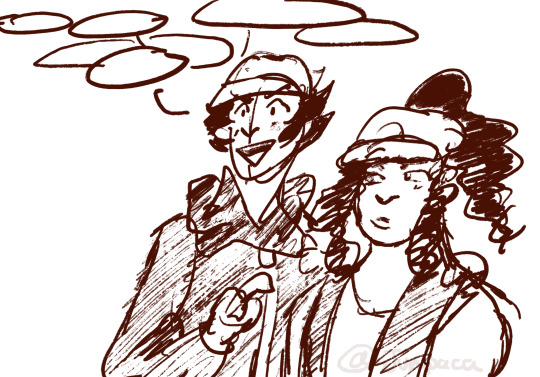

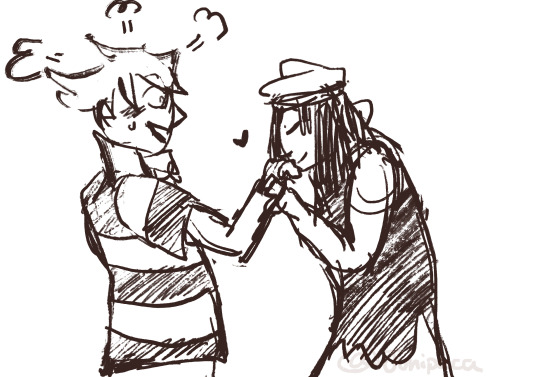



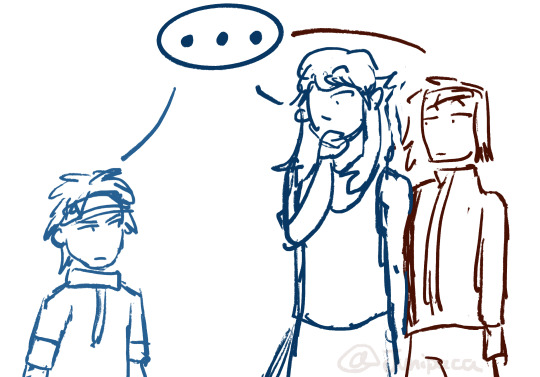
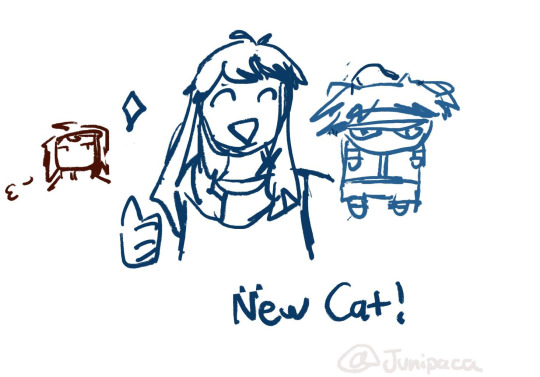
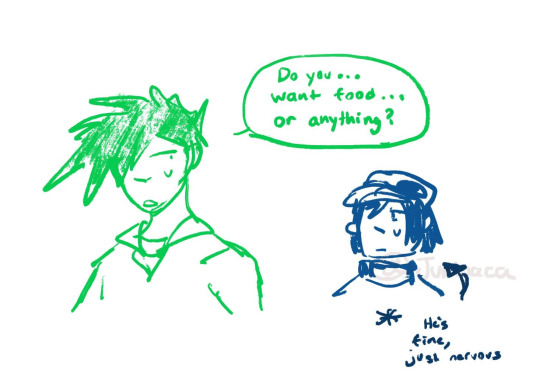
#jj’s art wow#pokespe#pokemon special#pksp#pokemon special adventures#trainer yellow#preciousmetalshipping#entourageshipping#agencyshipping#franticshipping#individual characters are too much here lmao but ill tag the ships#its been so long since i touched this series so i did a giant reread and i have Thoughts weeee#like. so many. opinions too but thoughts are more important lmao#i hope i got the ship names right nods lmk if false or smth
78 notes
·
View notes
Text
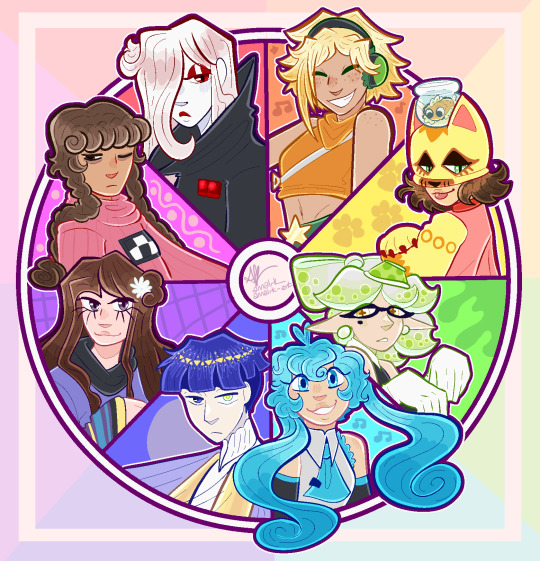
just wanted an excuse to draw these ones tbh
#color wheel challenge#trying human#viva pinata#zero escape#yume nikki#mysims#houseki no kuni#hatsune miku#my art#2023 art#too many characters to all tag individually but if you want any of them tagged specifically lemme know#also i know dj candy is 50% green but idk she's an orange character to me#i haven't drawn shade in years whoopsie
146 notes
·
View notes
Note
Hello! It's the Archangel anon again! I finally found the time to type out some "general" headcanons I have about the Archangels! Also, I'm sorry that even when trying to keep things short and sweet, I still ended up writing a damn novela🥲
Okay! A quick refresher first! Before he fell, Lucifer was an Archangel, along with his father (the Metatron) and his five siblings (Michael, Raphael, Uriel, Gabriel, and Zadkiel). We see, presumably, the other six Archangels during Lucifer's brief flashback in episode 5. I headcanon that the two angels with the biggest, most ornate halos are the Metatron (the leader of the Archangels) and Michael (the Metatron's second in command). The Metatron is on Lucifer's right, and Michael is on his left.
There! Nice and refreshed! Now for the others. The angel standing directly behind Lucifer, I feel, is Zadkiel. The angel on Michael's left is Uriel, and the one on his right is Gabriel. This means Raphael is the tall angel standing between Zadkiel and the Metatron.
Now for more detailed general headcanons. These are all a hodgepodge of actual attributes I found after researching the Archangels, along with ideas I liked and thought would work. To keep from going on and on about their personalities and stuff, I made lists of characters that reminded me of the siblings. Hopefully, that will give you a quicker idea of what I think these guys are like.
Michael (He/Him): Patron Archangel of Warriors (also chivalry, the sick, the poor, the suffering, and tradesmen ((grocers, bakers, fishermen, etc.))
Characters I associate with Michael: Zuko (AtlA), Hunter (The Owl House), Alucard (Netflix's Castlevania), Miles Edgeworth (Ace Attorney), Donatello (Rise of the TMNT)
Associated color: Royal Blue
Primary weapon: Shortsword
Bonus:
Tells everyone his favorite instrument is the harp
(it's actually the accordion)
(Lucifer is the only one who knows this)
Raphael (He/She/They): Patron Archangel of Healing (also travelers, lovers, the blind, and children/young people)
Characters I associate with Raphael: Katara (AtlA), Nani Pelekai (Lilo & Stitch), Willow Park (The Owl House), Martin Blackwood (The Magnus Archives)
Associated color: Green
Primary weapon: Pike
Favorite weapon: Bo staff
Bonus:
Favorite instrument is the bugle
Is the "wine mom" sibling
(Keeps a secret flask on them at all times)
(Uriel is the only one he shares his booze with)
Uriel (She/They): Patron Archangel of Wisdom, Truth, Purification, and Devine Flame (also the arts and sciences; ALSO also, was assigned by the Metatron patronage over "Light" after Lucifer's Fall)
Characters I associate with Uriel: Garnet (Steven Universe), Luisa Madrigal (Encanto), Yasha Nydoorin (Critical Role: Campaign Two), Daria Morgendorffer (Daria)
Associated colors: Red, Yellow, and Purple
Primary weapon: Claymore
Bonus:
Favorite instrument is the lyre
Gabriel (He/Him): Patron Archangel of Messengers, Postal Services, Communication, and Communication Services (👈 remember this one, I'm gonna send a separate ask later, going into more detail...😈)
Characters I associate with Gabriel: Literally every single blue character Ben Schwartz has ever voiced, specifically Rise of the TMNT's Leonardo (I don't know why, but I feel in my bones that Hazbin Gabriel is a Ben Schwartz Blue Guy™️. Maybe it has to do with the association I have between Gabriel and the Greek messenger god Hermes?🤷)
Associated colors: White (and light blue)
Primary weapon: Glaive
Bonus:
Favorite instrument is the trumpet
Lilies are his favorite flower (likes to wear them in his hair)
Stamp collecting is a secret hobby of his
Zadkiel (She/Her): Patron Archangel of Mercy, Forgiveness, and Freedom (most well known for being the angel that stopped Abraham from killing his son Isaac)
Characters I associate with Zadkiel: Luz Noceda (The Owl House), Keyleth (Critical Role: Campaign One), Jester Lavorre (Critical Role: Campaign Two), Charlie Morningstar (Hazbin Hotel)😊💖🌈
Associated color: Violet
Primary weapon: Dagger
Bonus:
Favorite instrument is the drums
Goes by the nickname "Kiki" (Keekee, the cat is named after her)
Second most skilled Archangel at hand-to-hand melee combat
Out of all her dad's siblings, Charlie clicks with her Aunt Kiki the best
Pre-Fall Lucifer, aka "The Light-Bringer" (He/Him): Patron Archangel of Humility, Music, and "Light" (both literal and metaphorical)
Associated colors: Gold and Pink
Primary weapon: His FISTS (the most skilled Archangel at hand-to-hand melee combat)
Bonus:
Favorite instrument is the violin (he calls it a fiddle to annoy Mike)
Loves all his siblings but is closest to Mike and Kiki
In the event of a prank-war, he can either be your greatest ally or your worst nightmare
Can always get his siblings to smile and laugh no matter how down they are
Is his father's second biggest mistake
And that's the six siblings down! All that's left is the Metatron. But, to be perfectly honest, that piece of work is gonna need an entirely separate ask dedicated solely to him. Plus, I have another separate headcanon ask about Gabriel that I desperately want to type out first. So I'll have to get back to you about Old Man Meta at a later date.
I will say this, though, out of all the shitty dads that exist within the Hellaverse, the Metatron is on a completely separate level all his own.
Oh! Also, he and Roo have MAJOR beef with each other. The Metatron and the Root of Evil go way, WAAAAAY back🙂
Whoa O.O That is...that is indeed a lot.
I am writing them down. I might not use all of them, but they seem like a very good foundation to build on. I like all the little tidbits and fun facts about them too XD And specific relationships they have with each other.
Also, everytime I see Metatron I read it as Megatron and I'm surprised by it each time. What are Transformers doing in the Bible. Hahah, but yeah, I didn't even know of the Metatron until "Good Omens." Very interesting that he and Roo have some beef that goes WAY back.
It makes sense, in a way, but still 👀 I like it.
Thank you for these!!
#asks#headcanons#archangels#archangel headcanons#i can't tag each individual character T.T#there's too many#but thank you for these!!#It was very interesting to read!#anonymous#anon
7 notes
·
View notes
Text
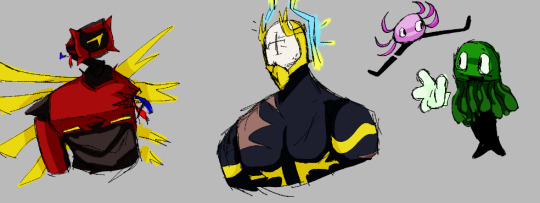

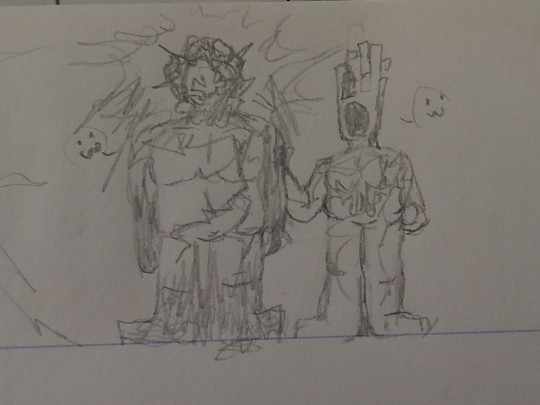
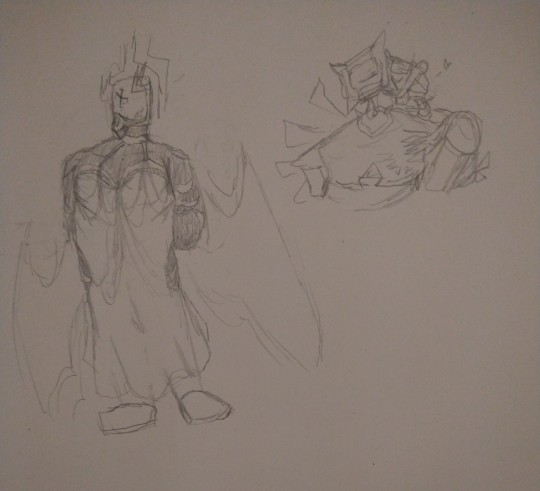
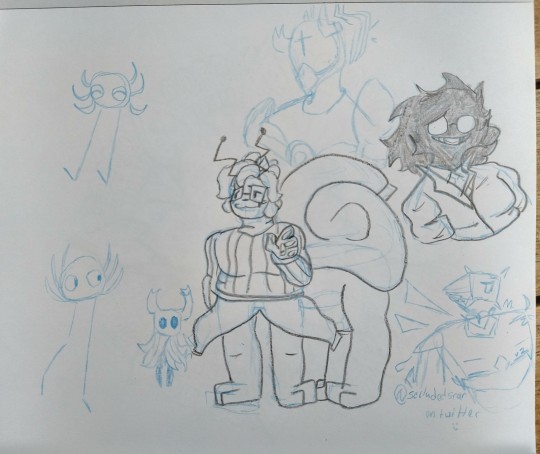
doodle dump
id tag hollow knight too but there is one single knight
#ultrakill#kinitopet#regretevator#i am NOT tagging the individual characters#way too many#scar artt real#i cant stop drawing gabriel....#help....
14 notes
·
View notes
Note
Do you have any age headcanons for some pokemon characters like for example the train men, N, Lysandre, ect?
Well, there's a few with canon ages.
N is confirmed to be like 20-22 and Cyrus is a beautiful baby boy at 27.
Lysandre is probably in his early 40s (maybe 42?) alongside Sycamore since they're clearly around the same age.
Ingo and Emmet are in their early 30s to me nowadays (despite my previous thoughts, I've stated), and Warden Ingo is maybe... I go between a few ages. The joke answer is he's just 37 and going through it hard, but it's probably mid 40s+ (and that, too, applies to Silver Fox Emmet, of course.)
Nanu is... something I don't want to give actual thought. Late forties to early fifties, maybe? 48-52 is the range I'd give.
Grimsley varies, too? He's clearly maybe mid to late 20s in BW... but, uh, idk about in Alola? Something either happened to him, or he had a rough time in like 2 years. Because... SM apparently is just two years after BW2. Help him.
Colress is hard in his 30s. Somewhere. Not sure. Just pick a random one in that range, and I'll probably agree. He just seems a more into his career and far out of whatever university had him. 33, I guess in BW2, so he gets to be 35 and insane in Alola.
Maxie and Archie also fluctuate for me. They are either in their late thirties or just turned 40. Actually, maybe Maxie is like 39 while Archie is 38 or something. I don't know. They just seem older but not too old? Especially their Gen 3 designs... I don't think there's that much age variance between ORAS and RSE them, though. Them again, with the Cyrus situation, they both might just be 25 lmao.
Guzma is over 20, and that much is certain. He and Kukui (and Molayne) are all around the same age, so I like to imagine he's like 23 doing all that sjajdns.
Volo is 27 to me because it would just be hilarious that being in Hisui/Sinnoh and being that age makes you want to climb that damn mountain. Though, I also do think he's in his mid-20s in general.
My controversial take is that I see Irida as 18 at the youngest. She's the head of her clan, and her close friendship with Palina makes me think they're close in age. And I see her age as close to Adaman's own, too, but maybe just a little younger to make her feel more of a need to prove herself to him. I think they would also prefer an adult to be head of the clan, too.
Elesa is maybe... 24-26? Hard to explain why. Just seems in that range.
Cynthia is probably around Cyrus's age, so 26-28. They seem maybe a little acquainted before all the stuff in DPPt, so I think they may have met a few times, maybe at a university or in school.
Larry is like 48-50. He's been confirmed to have worked for the Paldea league for 25 years, so it just seems likely he may joined up after he graduated.
18 notes
·
View notes
Text
incomplete list of shots i cant wait to see animated in season 3
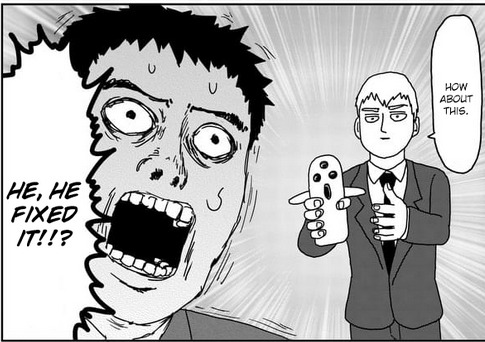
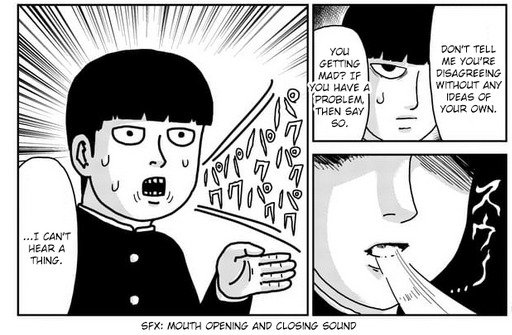


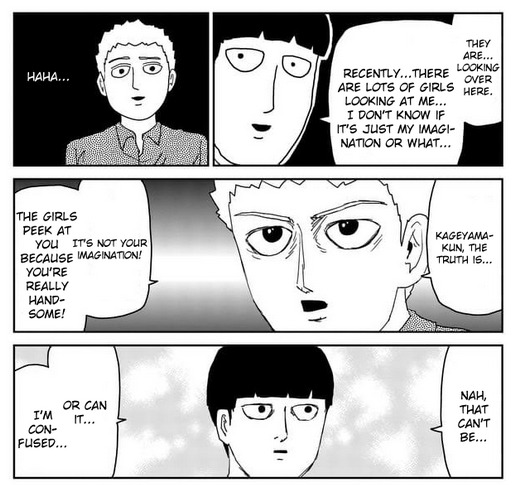
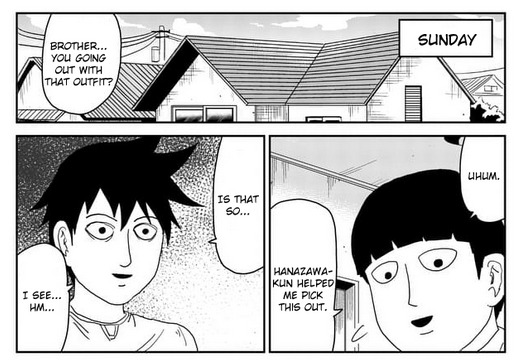
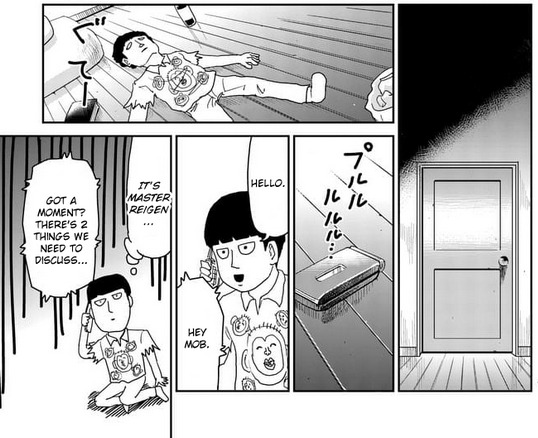
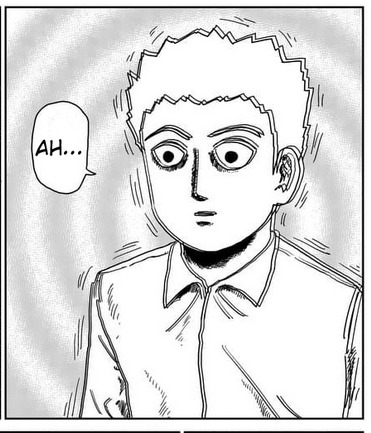


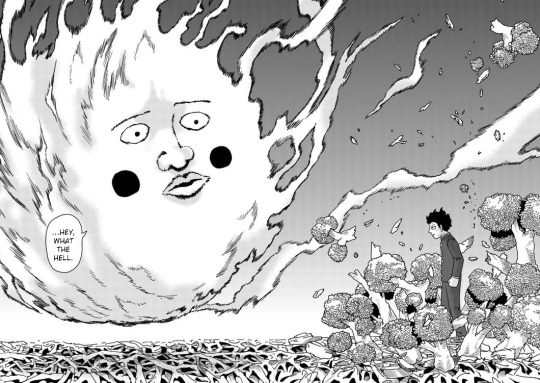
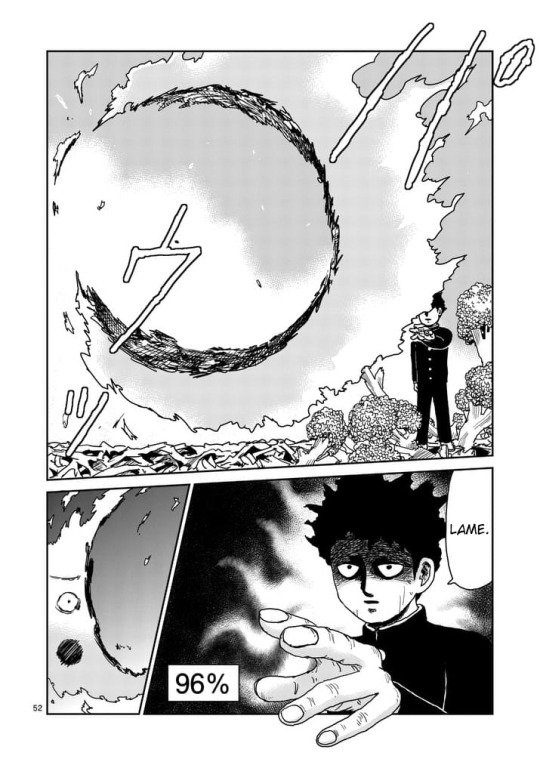



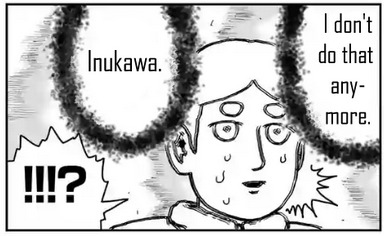


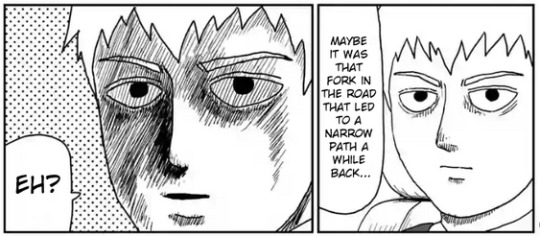





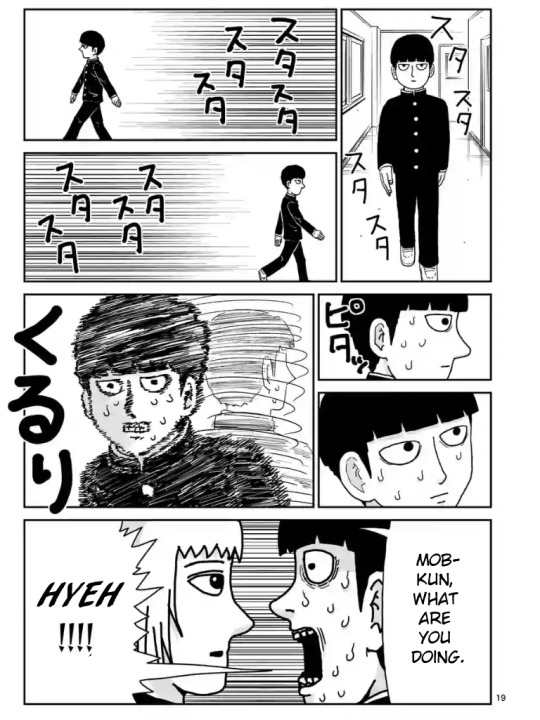

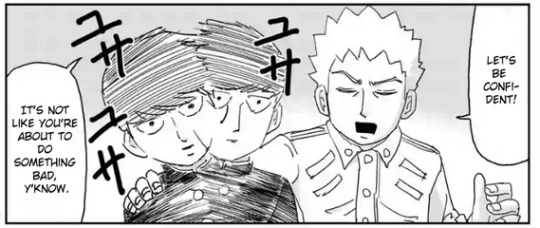
#i say 'incomplete' bc these are just the funny shots#+ i had to refrain from copying and pasting the entirety of the alien arc#mp100#mob psycho 100#mp100 manga spoilers#not tagging individual characters. too many. i die.#pic
232 notes
·
View notes
Text

No better way to begin and end the year than with Alhaitham, I'd say! Thank you everyone for sticking around throughout the year and may the next year be kind to you!
#summary of art 2023#Genshin Impact#Honkai Star Rail#I'm not going to tag every individual character that'd be waaaay too many#but seriously#thank you for sticking around :D
12 notes
·
View notes
Text
I don't hate or get annoyed by BiscuitBites/Nuzi as a ship, I just don't care much for most ships in general (besides PinkLemonade/Vizzy because personally I think their dynamic is really cute ok??)
And I'm not irritated that Nuzi is becoming canon like a lot of people are complaining about, Murder Drones is not becoming a shipping-focused show because of this, this episode had probably the most horror and emotional scenes by far... I'm happy shipping wars will be over and I'm happy that people are voicing out their happiness that the ship is canon! Yippee! People are happy, everything is good, and I'm not irritated by that!
What I do find irritating about some Nuzi shippers is that I'll have actual tears running down my face from reading a V memoriam post and then scroll down to see some people saying that they "didn't care V died that much and that they're glad that V is dead to completely set in stone Nuzi as a ship".
Most of the main cast of characters were comfort characters for me and this is a shot in the heart because I loved V as a character. Even though I was kind of emotionally hurt by the last scene, I really do think a sacrifice was a good call by Liam. That won't stop me from being sad however. But PLEASE, I don't want to see people complaining about how everyone's upset over V's death and not putting enough focus on Nuzi confirmation (which both statements are super untrue, both get a respective amount of attention)
Like I understand why some people wouldn't be super upset about the (presumably) V death, you can voice your own opinion and not be too emotionally affected by the death and I'm not judging you for that, but when I see people get to the point where they're judging and kind of shaming people for getting stressed or anxious or generally upset at a character death? It kind of kills me. Please stop beatboxing I'm crying on the floor
Though a lot of Nuzi shippers I see aren't like this and I'm so happy about that, it's super nice to see that!!!! I've seen some of the most amazing works of this community come from Nuzi people and I still respect them so much because they're still people and part of this fandom even though I don't directly care much for the ship itself anymore, I'm not judging anyone based on their favorite robot pairings (UNLESS YOU'RE LIKE. A PROSHIPPER. ICK. OFF WITH YOU.) :)
#i really don't want to point out names on the people posting these things (also i completely forget because i tried to block out the posts)#i don't know if i'm the only one seeing them but i still hate it#crackships are funny though those fuel me so much#ooh and i think dizzy is fun i just prefer vizzy because DD x WD is fun imo#lizzy as a character is just.. top tier shipping material in my opinion#nuzi still is just meh for me#and i get why it's a comfort ship to many#i too shipped uzi for a short amount of time because i thought it was cute#but it's still one of the better ships and i see why liam wanted it to be canon#relationships with a lot of fluff can be comforting to some#i don't mean to offend anyone just i'm seeing a few of these and it's genuinely just kind of upset at this#LET ME COPE AND DON'T UNDERMINE THAT WAHHHH#but i really just get comfort from individual characters as an aro/ace and it really just hurts to see the disrespect of V's death#i don't know if this is even a hot take i'm just. :((((((((#AGAIN NOT GETTING UPSET AS NUZI SHIPPERS AS A WHOLE JUST I'VE SEEN POSTS THAT REALLY JUST KIND OF UPSET ME AND I'M SURE A FEW OTHERS AS WEL#im.#ranting#in tags.#guh.#I don't even know if I proofread this right I'm like too upset rn#murder drones#murder drones spoilers#dumpster bullshit#i'm not tagging ship tags because i really don't want to get involved in much drama#i really don't want any hate barrages on me in my asks or replies or dms about this#mongrel behavior
14 notes
·
View notes
Text
genshin and mha characters i think have the same energy because i will never pass up the opportunity to combine my fixations. there are no explanations for these you just gotta trust me
kirishima and itto
iida and eula
todoroki and kazuha
aizawa and diluc
izuku and mika
mina and yoimiya
tsu and lynette
momo and keqing
if you think i’m gonna say dori and ochaco you are INCORRECT it’s actually kokomi and ochaco
5 notes
·
View notes
Text
fuck you [warrior cat-ifies your drones]
don't mind their statuses i don't care about those


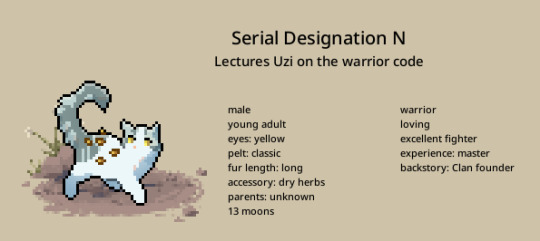


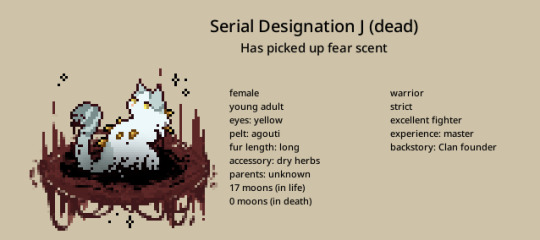
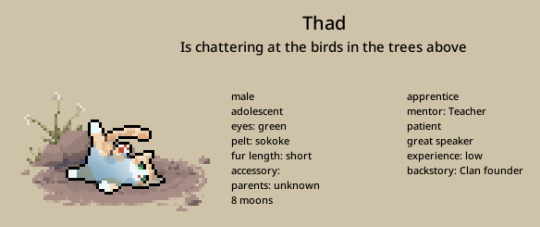

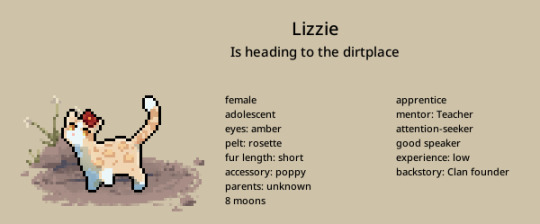
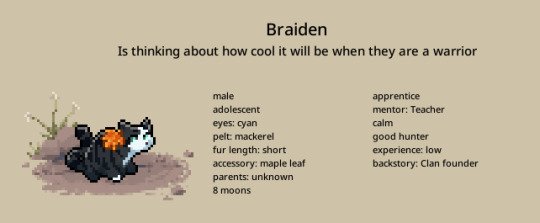

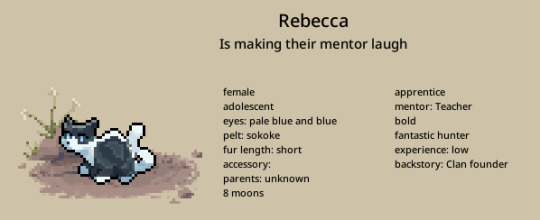
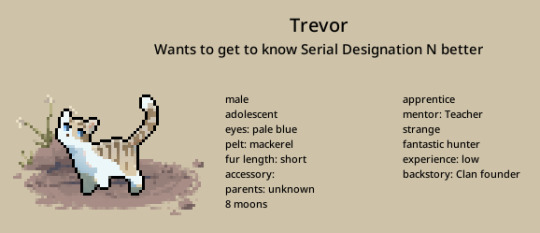
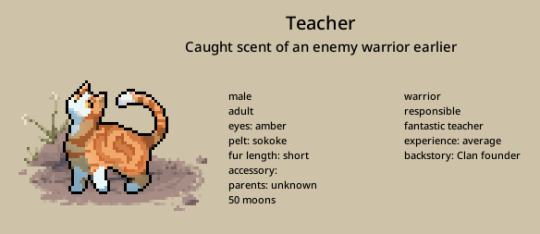


i just did every alive character i could find, i'm too lazy to do dead ones unless someone wants me to [other than nori, but she's important]
#THIS TOOK#SO LONG#this is clangen btw#amazing game#i didn't need to put this much effort into something so dumb and yet i did#murder drones#i dont feel like individually tagging characters#thats too many#warrior cats#clangen#technically
30 notes
·
View notes